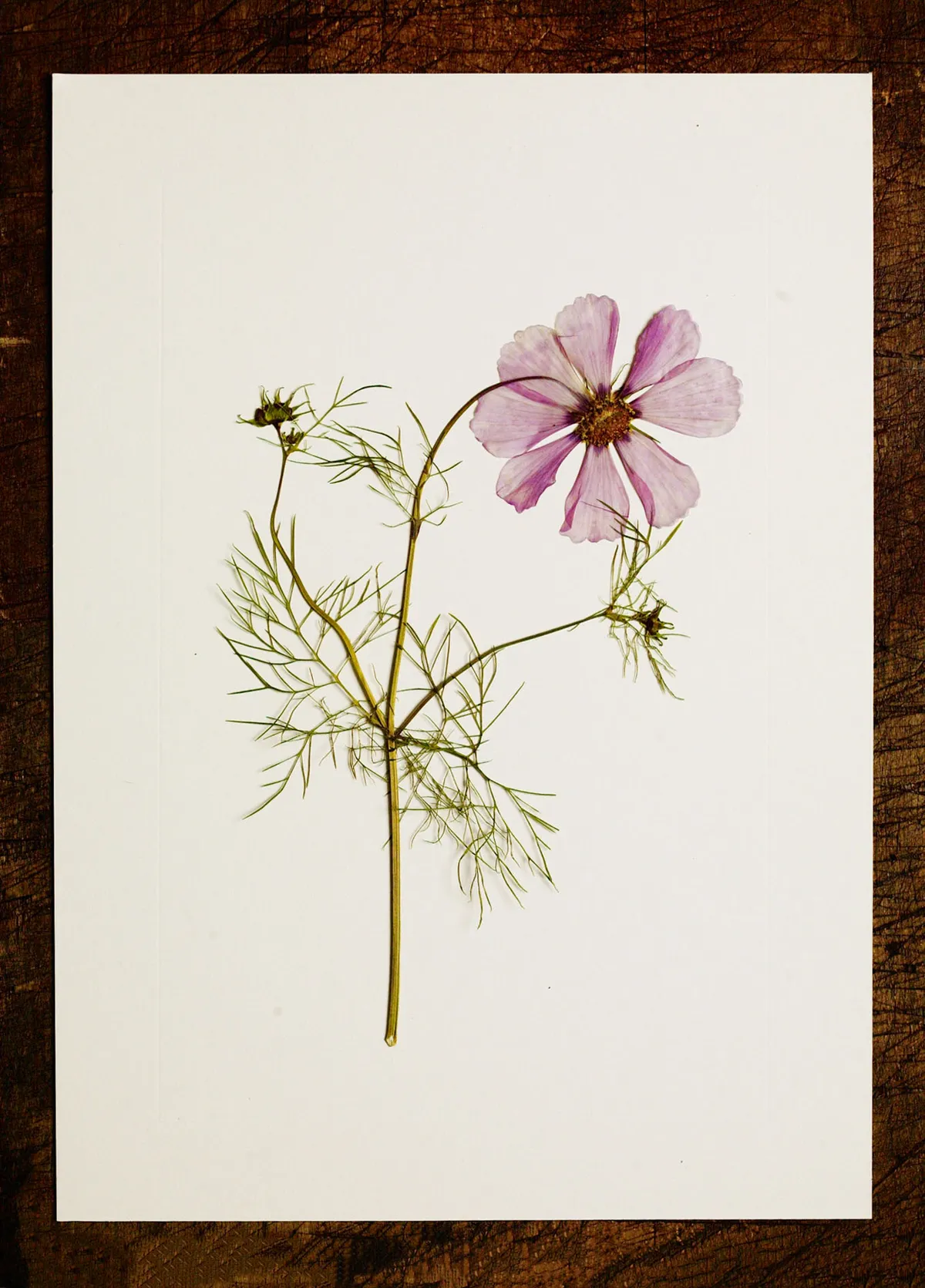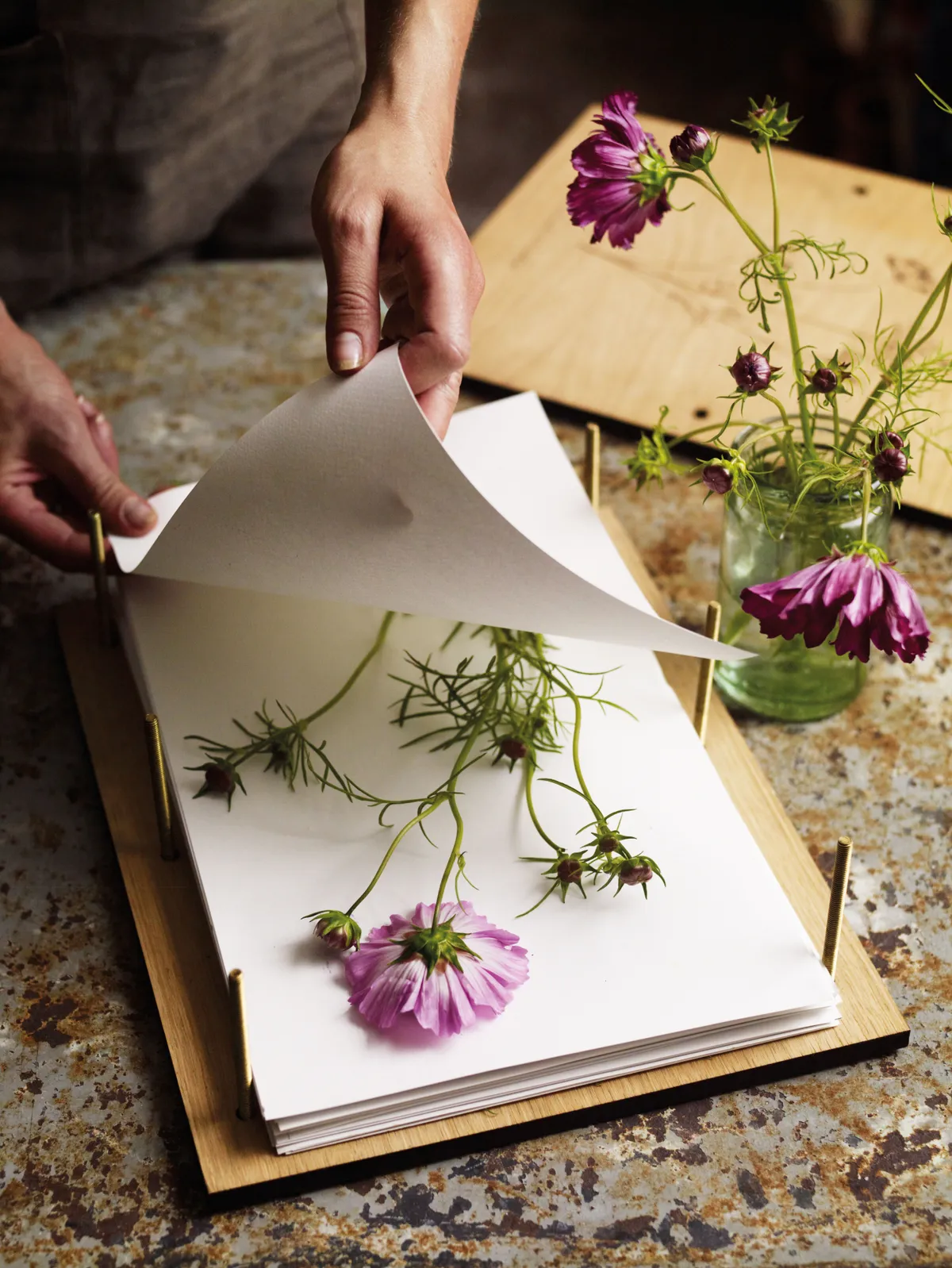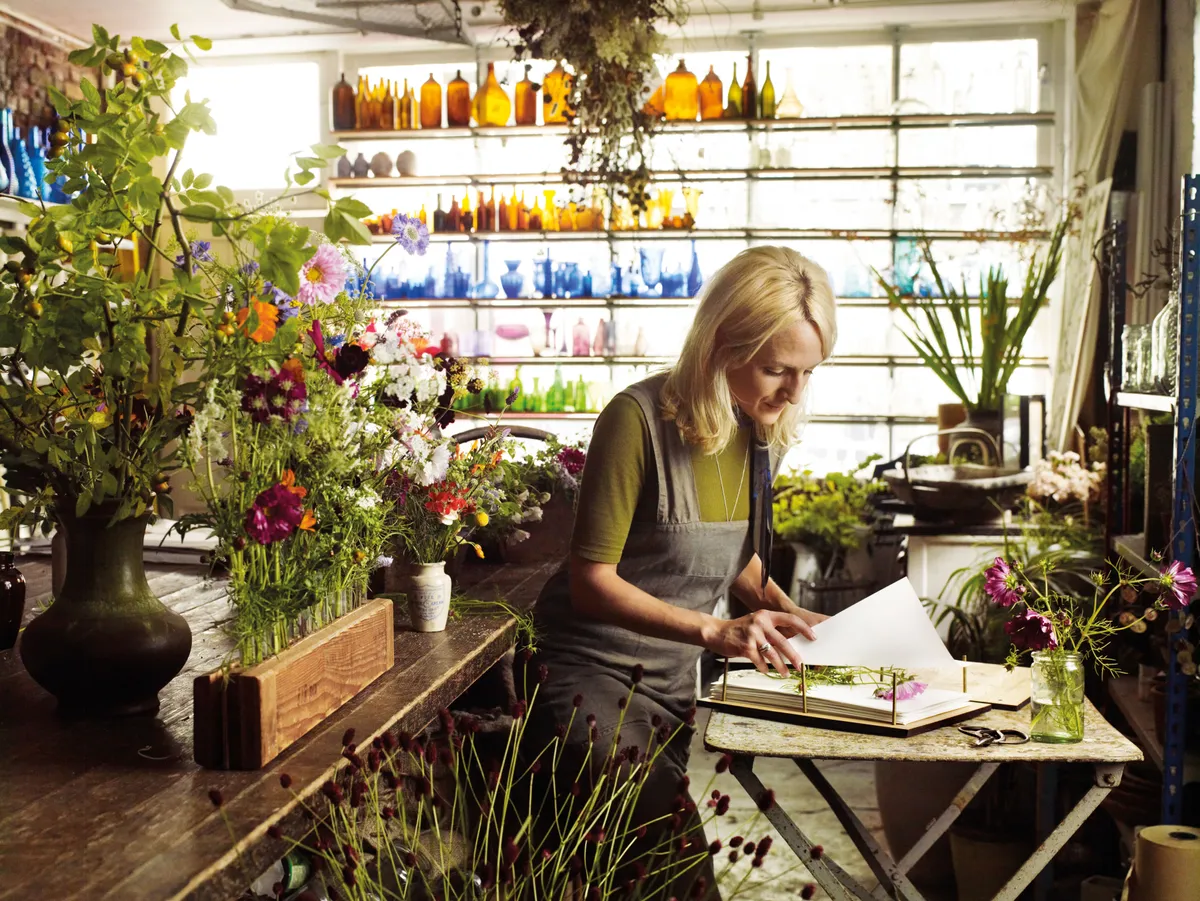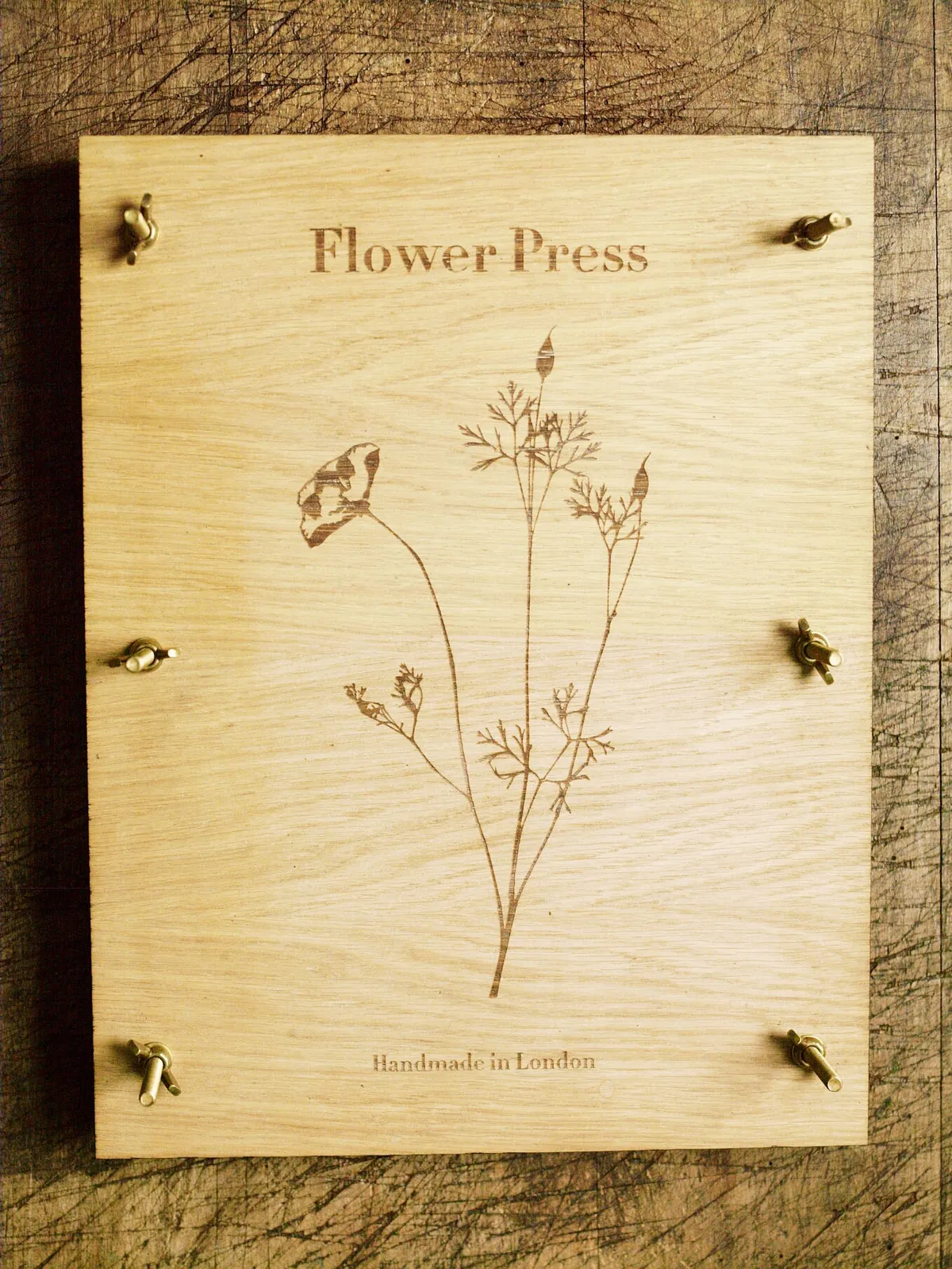Melissa Richardson picks up a fallen cosmos bud in her south London garden, and pops it into a vase to prolong its life. Her love of flowers and their preservation is what led her, after 27 years of running a model agency, to start JamJar Flowers in 2009. “People were always sending flowers for the models and, since we didn’t have enough vases, they’d all sit about dying,” says Melissa. “That depressed me.” Her idea – to deliver seasonal bouquets in vases or jam jars (‘because that’s what we put our pickings in when we were kids”) – caught on and business flourished until, in 2014, a commission from Mulberry for a show invitation using pressed flowers sparked a new direction.
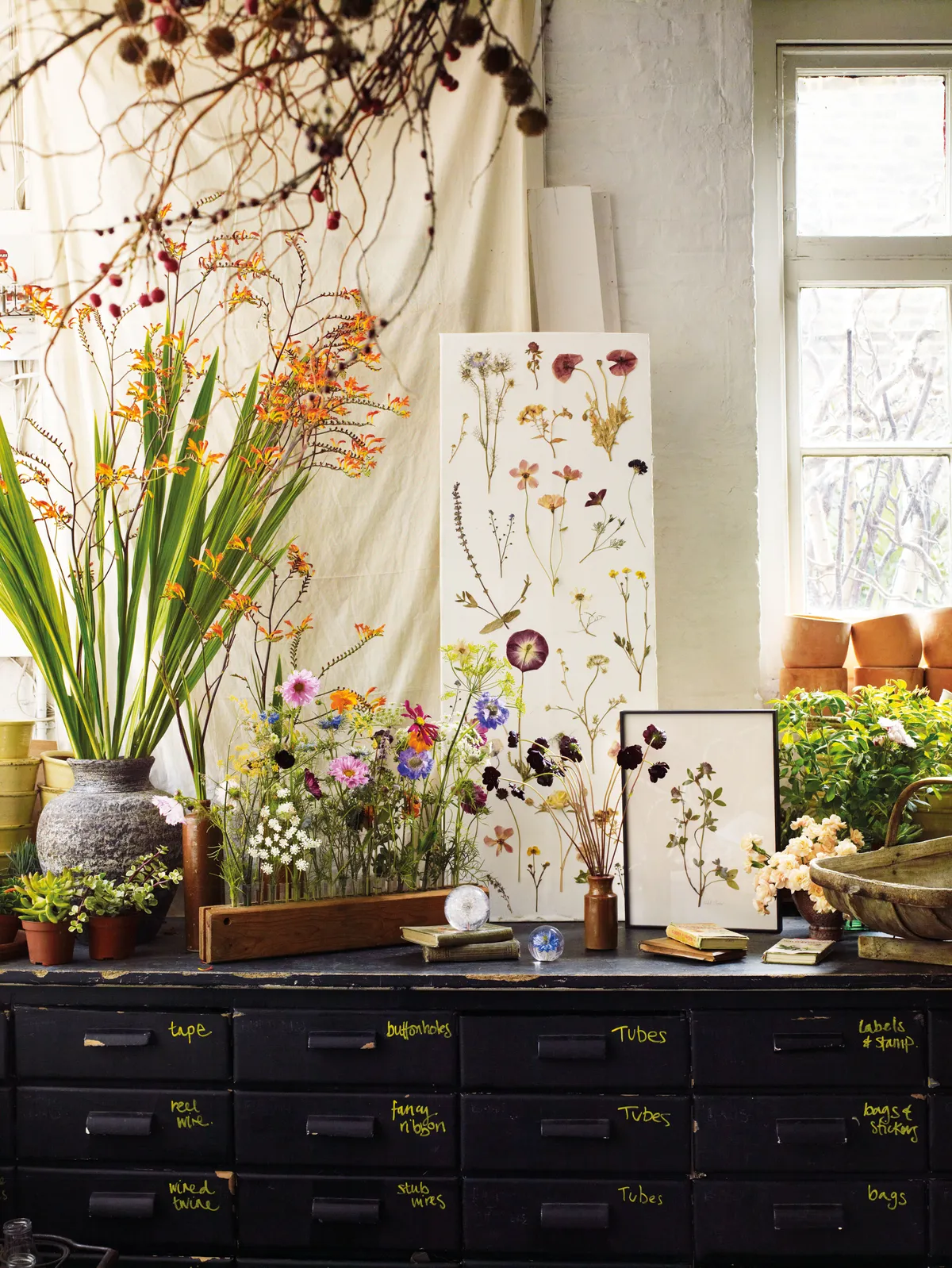
“We said yes immediately, even though neither of us had ever pressed flowers professionally before,” says Amy Ireland who had by then joined Melissa. Two frantic weeks followed as they researched the process and began pressing. “We learnt the hard way,” says Amy. “We’d been using ammi, which was pressing beautifully and then all of a sudden, supplies dried up and we had to try dill instead, which was a disaster.” Luckily, more ammi was found, Mulberry was happy – and Melissa and Amy were hooked.
When, in 2017, they were asked to produce an installation for a three-month long exhibition, pressed flowers were the obvious choice. “We’re such a small team and couldn’t have gone in and topped up fresh flowers every day,” says Amy. “We wanted to do something that would last.” They produced a roll of wallpaper using pressed flowers and a bespoke panel of mounted, framed pressings. It generated both huge amounts of interest and is one of Melissa and Amy’s all-time favourite commissions: a request to create another bespoke panel – a floral record of the land and woodland around an extraordinary house on Dartmoor. “That was the first time we’d taken the presses to site,” says Melissa.“We pressed straight out of the ground, picking wild strawberry plants and ferns the owner took us to.” Others have been similarly inspired, asking for pressings of blooms they had in their wedding bouquets or for portraits of favourite plants. “It’s such a lovely idea to preserve the look and feel of a garden,” says Amy.
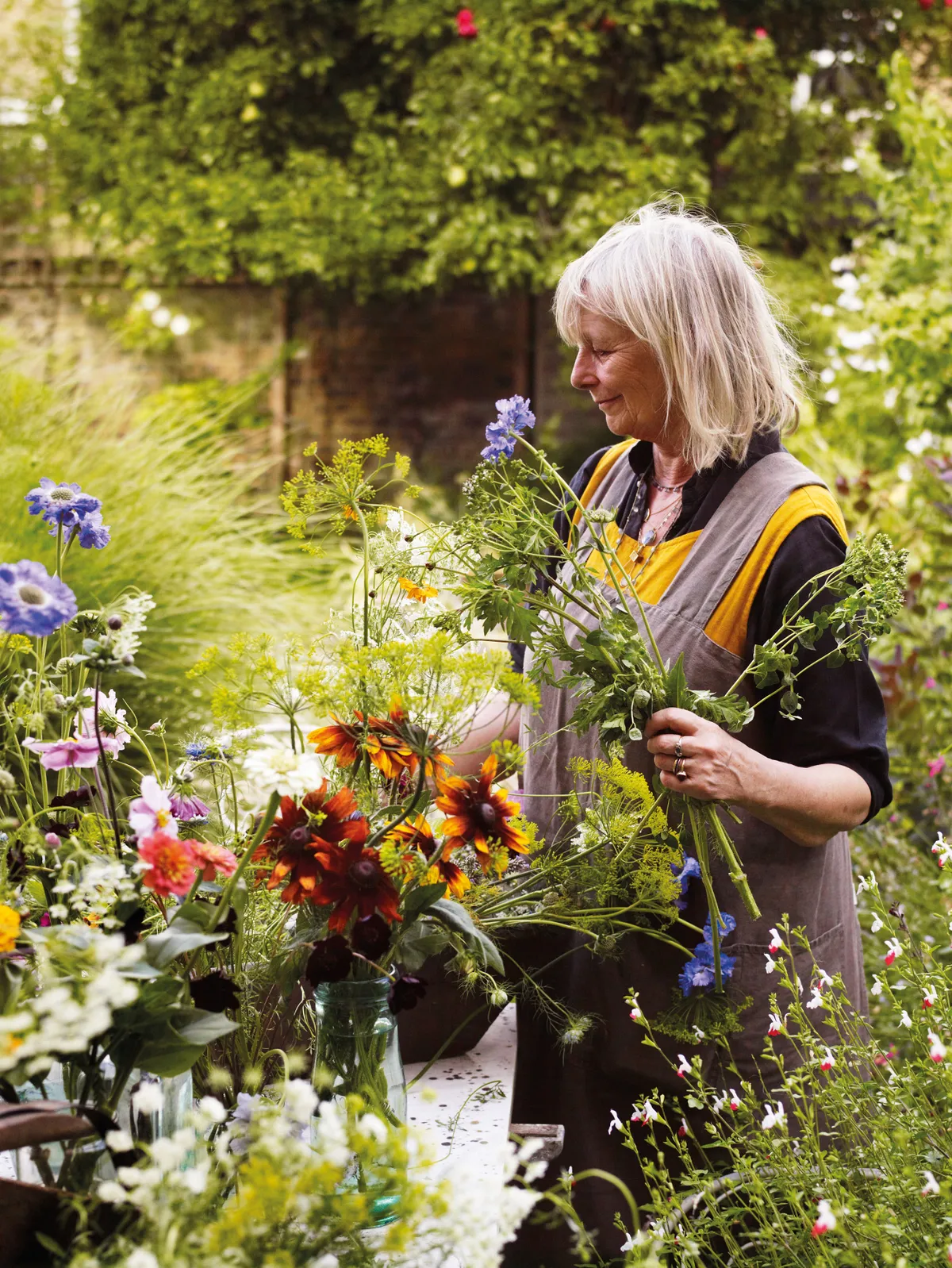
The pair now take their presses with them wherever they go, building up an archive of blooms for their work. Picked, dry blooms are placed in the press, sandwiched between blotting paper to draw out their moisture. “You can manipulate the flowers to get the shape you want,” says Amy, nudging a sweet pea flowerhead to accentuate the natural curl of the stem and pinching off an obfuscating tendril. Flowers positioned, a layer of non-absorbent card is placed on top and the process repeated until the press is full. Then it is screwed tight, dated, and left for four to six weeks (checking after two weeks and then every week or so) until the paper and the flowers are perfectly dry.
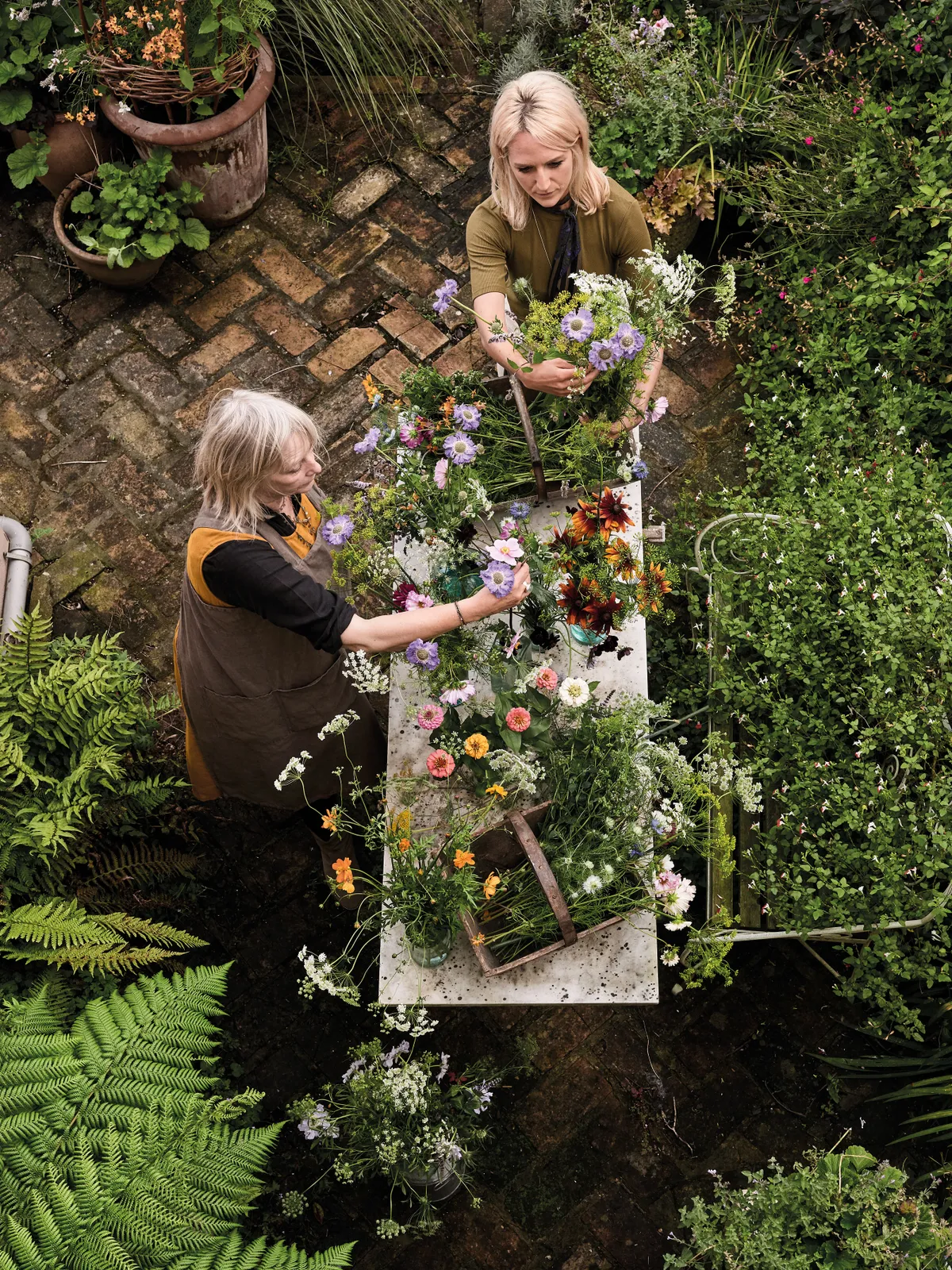
“The more delicate the flower, the better,” says Melissa. Roses, peonies, daffodils are best avoided, as are white flowers, which are the first to turn brown. Once pressed, the flowers are then mounted on card using tweezers to carefully peel away the paper and a little glue applied to the sturdier elements – the stem, leaves and buds. Opening the presses is the most exciting part of the process. “It’s always a surprise,” says Melissa, unveiling her latest pressing. “You never know what’s going to work. Look at this poppy. The petals shouldn’t really be folded like that but look at it.”
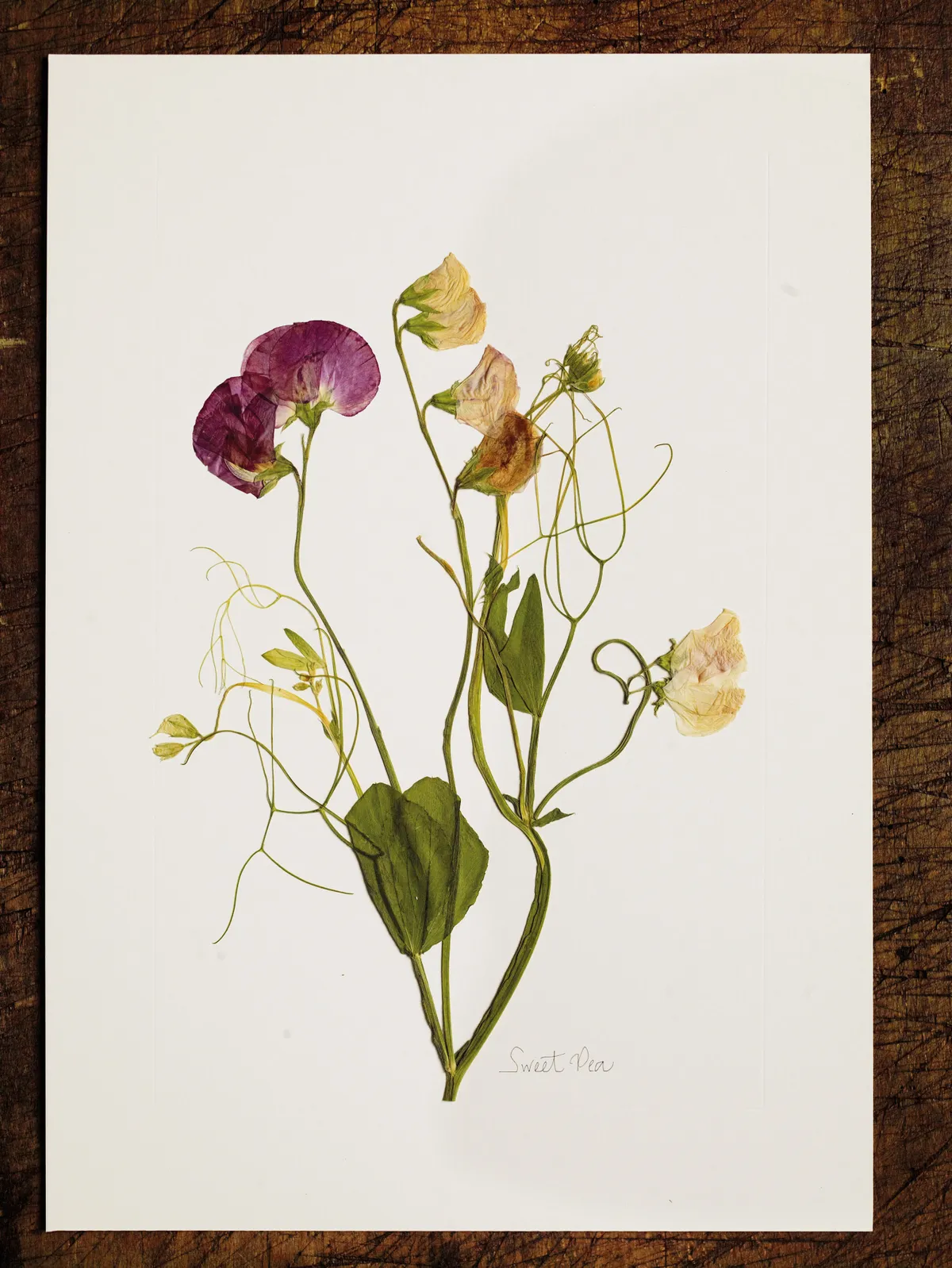
How to press flowers
1
The less moisture the better
Leaving space around the flower helps the paper to draw out moisture.
2
Press for weeks
They should be left inside the press for four to six weeks until the paper and the flowers are perfectly dry.
3
Pick the right blooms
Delicate flowers, such as fennel, cosmos, poppies, geums and everlasting sweet peas, “which press like a dream”, are ideal.
4
Press fresh
Flowers for pressing should be as fresh as possible and dry (not dewy).
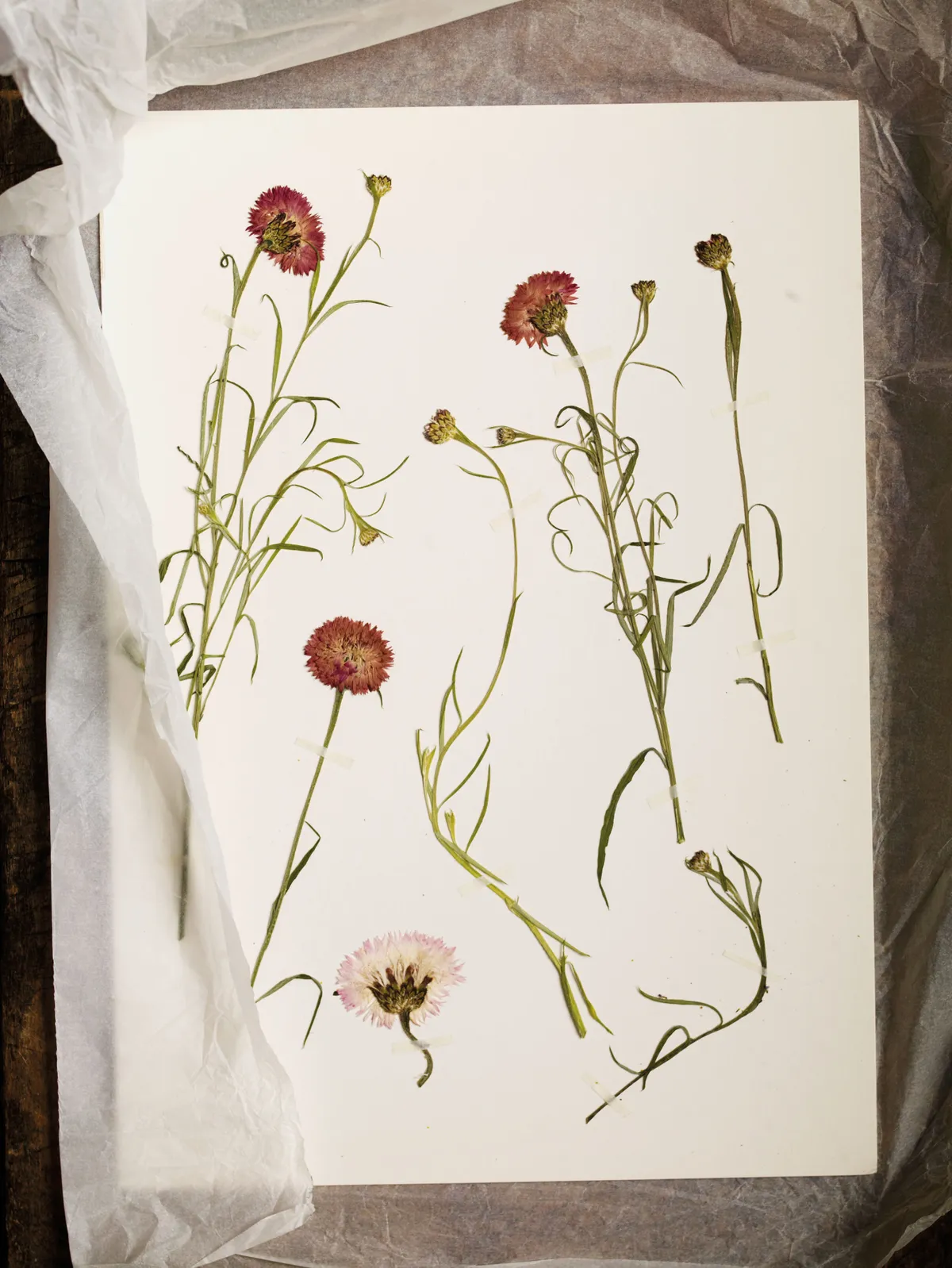
Find out more about JamJar’s pressed flowers at jamjaredit.co.uk
